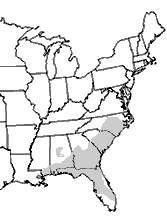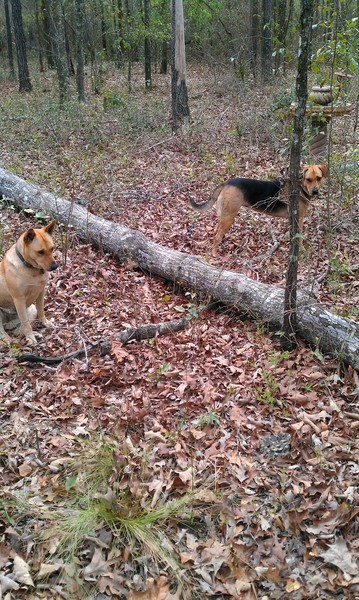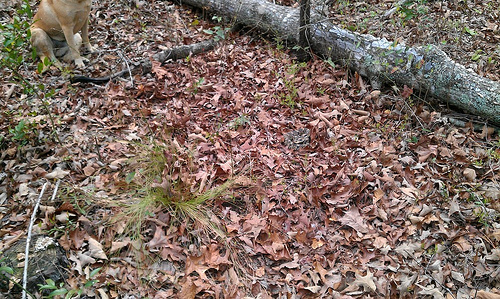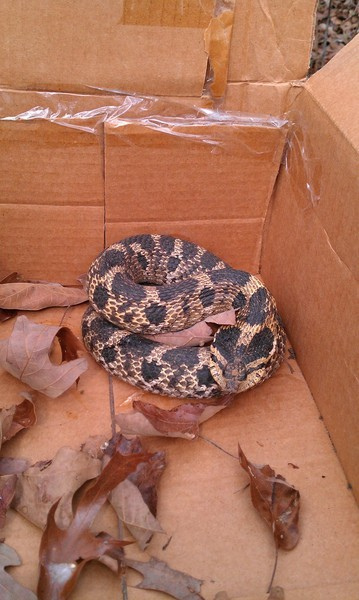Yellow Dog and Brown Dog pointing:
Pictures by John S. Quarterman for Okra Paradise Farms.
Can you see it there, between the wiregrass and the oak log?
Pictures by John S. Quarterman for Okra Paradise Farms.
Southern hognose snake (Heterodon simus) in box:
Pictures by John S. Quarterman for Okra Paradise Farms.
 Movie: Snake in box (5.4M) Movie: Snake in box (5.4M)
Movie: Snake in box (5.4M) Movie: Snake in box (5.4M)
Snake in the oak leaves
John S. Quarterman, Gretchen Quarterman, Brown Dog, Yellow Dog, Lowndes County, Georgia, 9 March 2012.
Video by John S. Quarterman for Okra Paradise Farms.
According to UGA’s Savannah River Ecology Laboratory Herpetology Program, 
Distribution and Habitat: Southern hognose snakes were historically found in the Coastal Plain of the eastern United States from southern North Carolina to southern Mississippi and in most parts of Florida . However, this species has declined in recent years (see Conservation Status, below) and is now only found in scattered locations in South Carolina, North Carolina, Georgia, and Florida. Although both species of hognose snake in the Southeast prefer sandy areas, southern hognose snakes are found almost exclusively in sandhill, pine flatwood, and coastal dune habitats, and in the sand ridges of central Florida. Because of their fossorial habits, hognose snakes sometimes persist in suburban or agricultural areas with sandy soils. The Savannah River Site is one of the few areas where southern hognose snakes are still relatively common.
They’re certainly still common here at Okra Paradise Farms.
Conservation Status: Southern hognose snakes have apparently declined in recent years and are of conservation concern throughout their range. They have not been found in Alabama or Mississippi since the 1970’s and are restricted to scattered locations in the states where they still occur. Although introduced fire ants have been implicated in the decline of southern hognose snakes, they have certainly also suffered from loss of longleaf pine forest, urban sprawl, and conversion of upland habitats to agriculture. Unfortunately, the secretive habits of this species have hampered study of their ecology and population dynamics.
I guess it’s yet another case of something that’s common here in our tiny scrap of native longleaf forest that’s no longer common elsewhere.
-jsq
Short Link:


